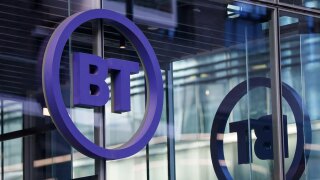Africa's tower market is no stranger to adversity. Managing dispersed digital infrastructure across such a vast continent naturally comes with a series of inbuilt challenges.
But over a decade into the African towerco ecosystem being developed, the firms that embrace these challenges are now well equipped to meet them head on.
In this deep-dive into the challenges facing Africa's towercos, Christopher Greaves, head of research for Africa at TowerXchange, examines the latest series of problems that the industry faces, and how its different players are adapting.
TowerXchange Meetup Africa and the Digital Infra Power Summit, both running at the Kenyatta International Conference Centre on the 10-11th September, will delve into all the above discussions with Africa’s towerco ecosystem.
For more information on how you can attend, contact Chris at Christopher.Greaves@towerxchange.com
Energy remains king for cost-efficiency, carbon emissions, and clear reliability
In Africa, managing digital infrastructure comes hand in hand with managing energy, especially when the infrastructure footprint is spread out like tower networks.
Less than half the African continent enjoys a reliable supply of grid electricity, and the rapid growth of population combined with stagnant investments in grid expansion has led to loadshedding and energy access challenges.
MNOs, who traditionally managed their own power systems, have been steadily offloading responsibility to their partners. Just like the towers it needs to support, energy networks have high CapEx and OpEx requirements without being a direct revenue generator for operators.
Towercos are the primary choice as an extension of their existing passive infrastructure management services. In Africa, they have spent the last 12 years navigating the challenging operating environment, with many markets seeing around 40-60% of towers being off grid and battling loadshedding that commonly ranges from 3-12 hours per day depending on severity.
Most towercos now provide power-as-a-service, in which the towerco owns and manages the power equipment with Service Lease Agreement (SLA). requirements to ensure that the network remains active.
Uptime requirements in SLAs are usually above 99.8%, which is extremely challenging to maintain given Africa’s operational environment.
While many networks rely on diesel generators as the primary source of power, often inherited as part of a tower sale, towercos have been investing heavily in upgrading power systems with solar panels and battery banks, with other solutions such as wind and hydrogen fuel cells also being applied in certain cases.
Energy Service Companies (or ESCOs) have also emerged as energy partners for both towercos and MNOs, seeing success partnering with operators who have not sold their towers. Orange has signed ESCO contracts in most of their markets to offload energy management to companies such as IPT Powertech, Aktivco, CREI and Energy Vision.
Rural is seeing the biggest growth in infrastructure
Africa faces an enormous telecom infrastructure gap, and this gap is most acutely felt in rural communities and the more remote parts of the continent.
According to the most recent GSMA data, 15% of Africans do not have mobile broadband coverage; over 180 million people.
As a result, targeting not just population coverage but geographic coverage has become a focal point for many government strategies aimed at plugging the connectivity gap.
MNOs have been on the front lines, implementing government digital connectivity strategies to achieve 95%+ geographic coverage targets.
OEMs such as Nokia and, Ericsson had done much of the early rural builds (and still do in certain markets), but with major towercos such as MTN and Airtel having divested their towers to towercos, responsibility for rural site builds has also shifted to infrastructure providers.
But rural coverage is not well suited to towercos; the fixed-lease, multi-tenant macro tower model that has proved effective in areas with high demand, becomes commercially and financially challenging in low-demand rural communities.
IHS Towers built around 400 rural towers for MTN in Nigeria but has reported near-zero profit on these sites. In total, the towerco operates 601 rural telephony sites in Africa.
Zambian towerco Infratel was commissioned to deploy around 60 macro towers for Zamtel, but the operator’s lease costs are higher than the revenues from delivering active services.
But MNOs have targets to achieve, and a new type of connectivity infrastructure company has emerged to fill this gap.
Network-as-a-Service companies are seeing early but explosive success in their expansion across Africa, signing large deals predominantly with Orange, MTN and now Airtel Africa.
These companies offer a variation to the traditional tower model; providing capex and opex for the installation, operations and maintenance of passive infrastructure, active equipment and on-site power delivery (as rural sites are nearly entirely off-grid).
Rural towercos also operate on a revenue-share model (although it is common to have a mix of fixed-lease and revenue-share sites), whereby the towerco receives a percentage of the revenue earned from end-user activity as opposed to a fixed-lease, mitigating the risks to MNOs of signing unprofitable lease agreements.
Africa Mobile Networks (AMN) has led the continent's NaaS sector, deploying over 4,000 towers for Orange and MTN across 14 African markets, and expects to reach 5,000 by the end of 2024.
US-based firm Vanu expects to deploy around 5,000 sites within the next 5 years, and Canadian firm NuRAN has 4,700 sites under contract in 8 countries, aiming to reach 10,000 in a similar 5-year period.
iSAT Africa, another rural specialist, has just entered its 5th market and expects to hit 1,000 sites by 2027.
In total, around 15,000 new towers are currently under contract between these four firms, or around 5% of Africa’s entire tower stock. New players are also getting in on the action; pan-African managed service provider I-engineering has signed a NaaS deal with MTN Nigeria with 40 towers live. Another managed service provider NETIS is also currently exploring the model.
Towercos, too, have been looking at NaaS. While urban fixed-lease towers are the bread-and-butter of the business, towercos are also striving to be full turnkey infrastructure partners for their customers and see the importance of adding NaaS to their portfolio.
Looking to the skies
The bridge between non-terrestrial and terrestrial networks has been strongly established in backhaul service provided by satellite operators for MNOs and towercos.
Satellites can be used to link backhaul between data centres and hubs located near the core of their customers’ networks, to ground stations on towers in rural areas.
AMN and Intelsat’s partnership in Madagascar, combining satellite backhaul and solar powered base-stations, has helped create a tower solution that can bring connectivity to the most remote regions of the earth.
This allows towercos to make their sites more commercially attractive and adds an extra layer of resilience.
Loadshedding, theft, extreme weather conditions and conflict all risk causing network downtime, which in turn can lead to penalties for the operator and disgruntled customers.
A 2022 review by the South African Reserve Bank urged local banks and operators to improve their resiliency to ensure critical financial systems remain active via enterprise satellite backhaul, connecting their systems directly to core networks in Europe and the US.
Towercos are considering going a step further, with the potential for satellite providers to divest their ground stations for passive infrastructure management, allowing operators to focus their capex on their non-terrestrial network. A huge volume of these sites are needed to support dense LEO constellations, and someone needs to manage all this equipment.
While direct-to-device could be a future threat to the tower industry, for the short-to-medium term it seems the best solution is one where MNOs have a heterogenous network that combines all worlds; towers will deliver localised high-capacity coverage with peak data rates at lower latency and cost in dense urban areas where a satellite would be incapable of handing so much data.
In the long-run, a dual-pronged approach to urban and rural coverage appears the most likely path as towercos focus on high-capacity urban areas with NTNs taking over more responsibility for rural and remote coverage.
This does leave a final question as to the role of companies such as AMN, Vanu and NuRAN, who offer rural terrestrial network-as-a-service coverage.
Moving beyond the macro tower
While ground stations are on the fringes of towerco business development managers’ minds’, other more immediate assets are being explored or already being integrated into the tower model.
Despite Africa’s mature tower industry, African towercos lag behind other markets in terms of adjacent verticals, owing largely to the enormous ongoing demand for core macro tower infrastructure.
Towerco strategy is fundamentally driven by becoming turn-key infrastructure partners to their customers, and the industry is adapting their product portfolio to meet this.
Helios Towers has been deploying outdoor DAS solutions in Tanzania to provide localised coverage in high-density areas, ATC Uganda is working with the Kampala city municipality to build street furniture for smart city deployment, and local Kenyan towerco AlanDick & Co. is deploying small cells for Safaricom’s 5G network in Nairobi.
In Nigeria, IHS Towers has seen great success in their fibreco GICL, which recently completed 10,000km of fibre optic cables, mostly to connect rural communities.
IHS also explored fibre deployments in Rwanda, but MNO competition concerns led to the idea being put on hold.
Helios Towers operates 15 small data centres in South Africa, and while currently only a small part of its business, is positioning itself to support operators for future edge computing capabilities.
Zambian towerco Infratel is Africa’s only full infraco, operating around 1,250 towers, a fibre backbone network and three full data centres.
Another towerco in Namibia, PowerCom, is in ongoing discussions with parent company Telecom Namibia to take over its fibre and data centre infrastructure, following Infratel’s business model.
While towercos will likely continue to be driven by their core macro tower business in Africa, there is increasing interest in exploring alternative services that build on customer needs, to ensure towercos remain a first-choice partner for infrastructure.





